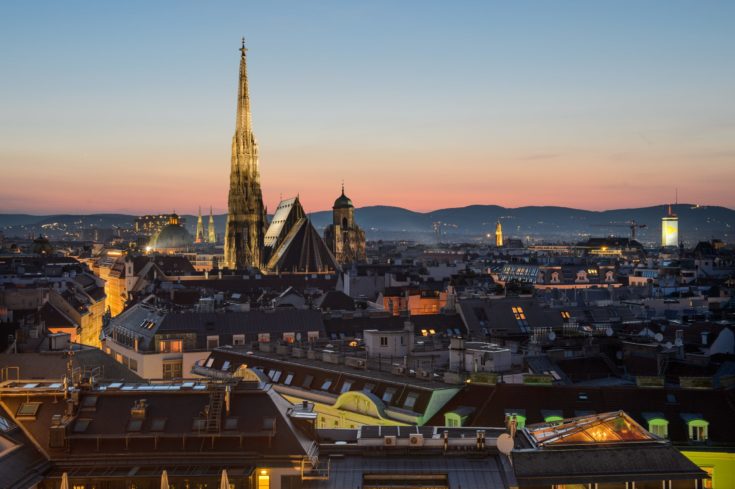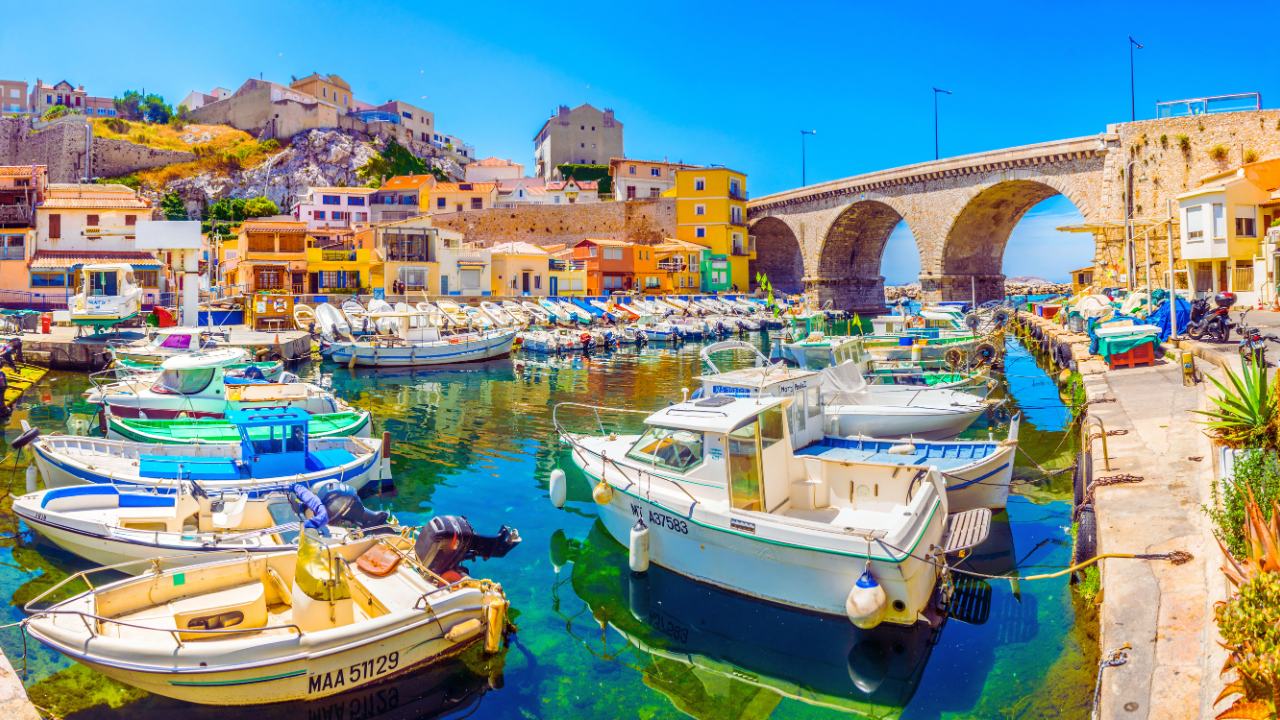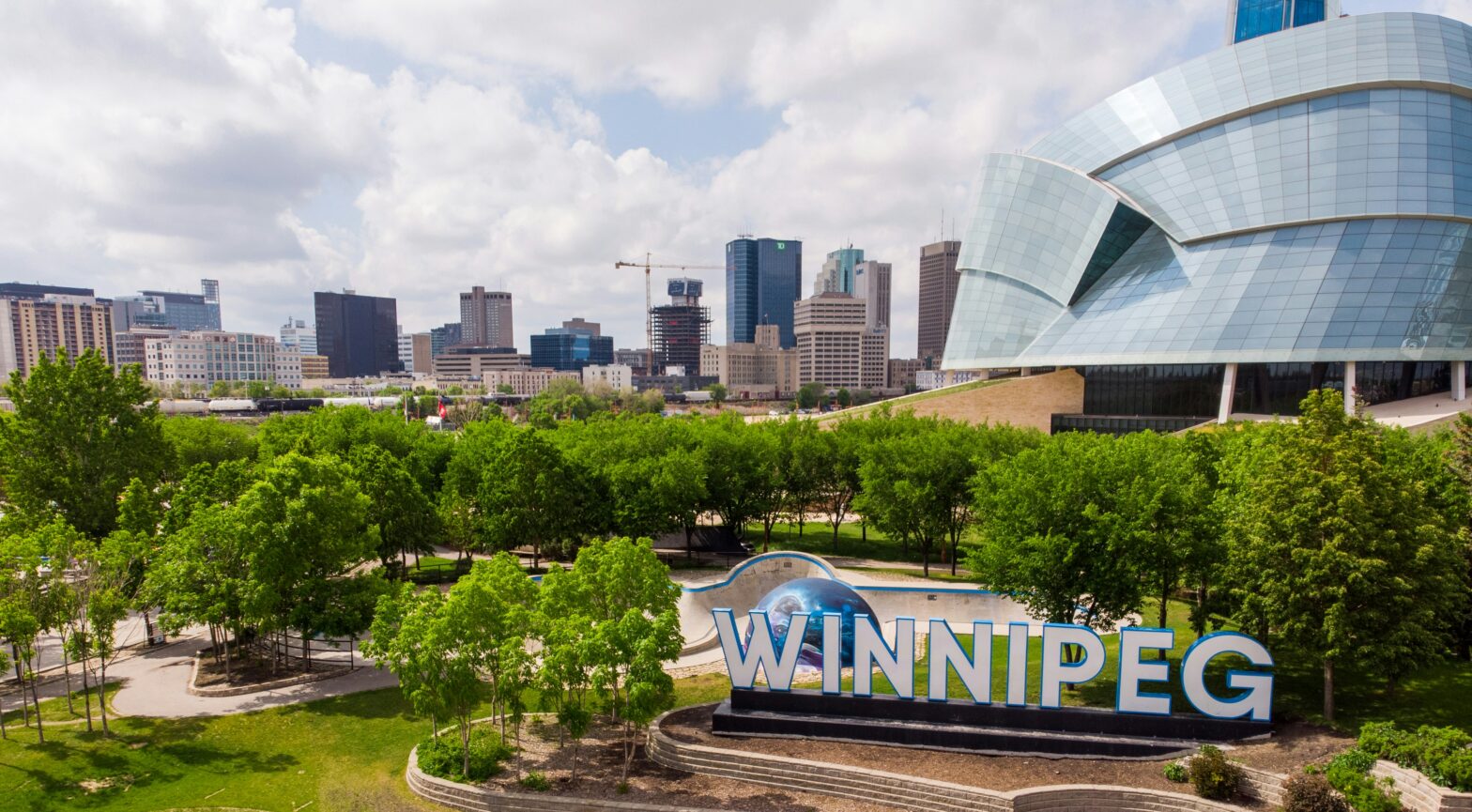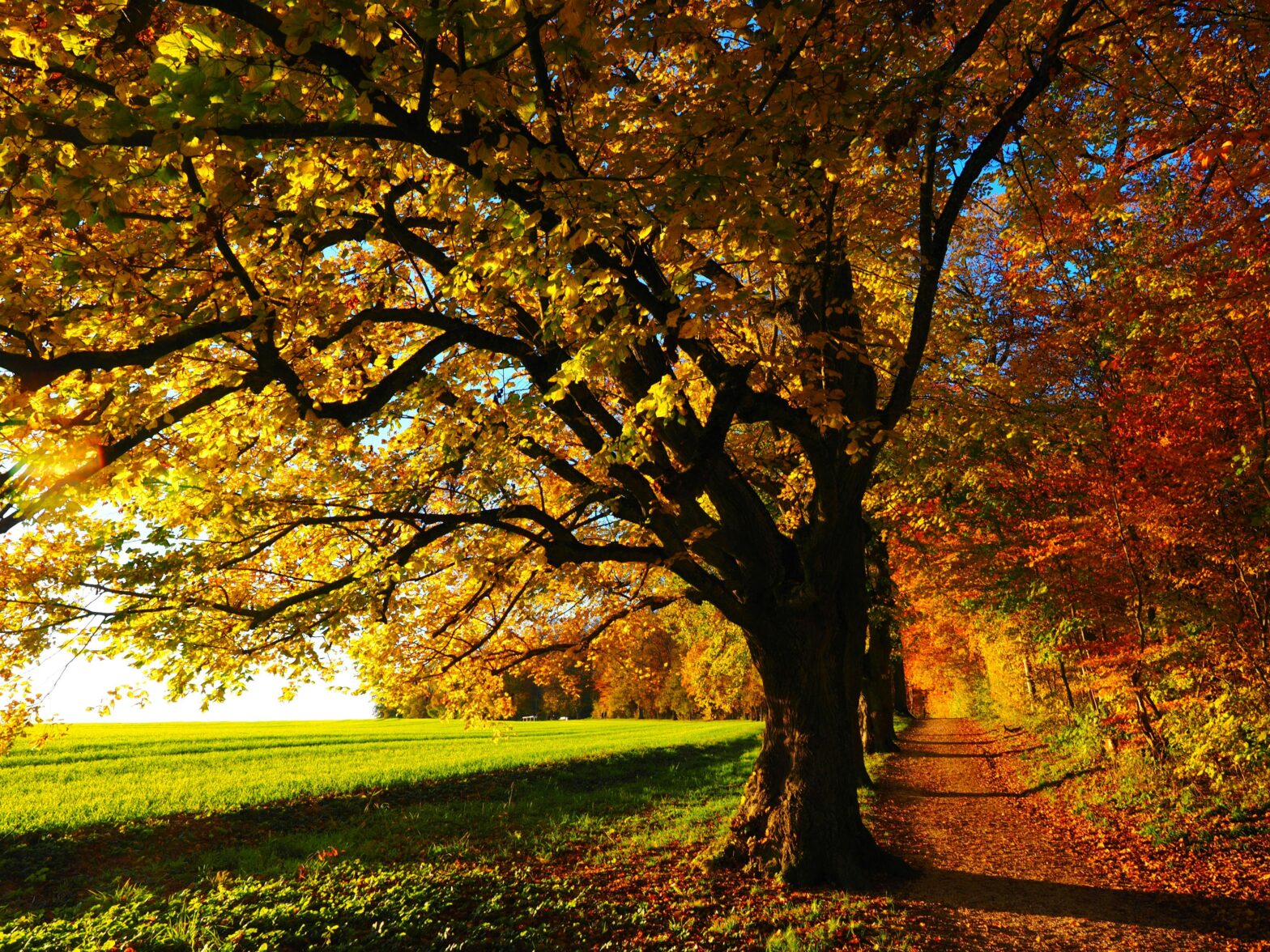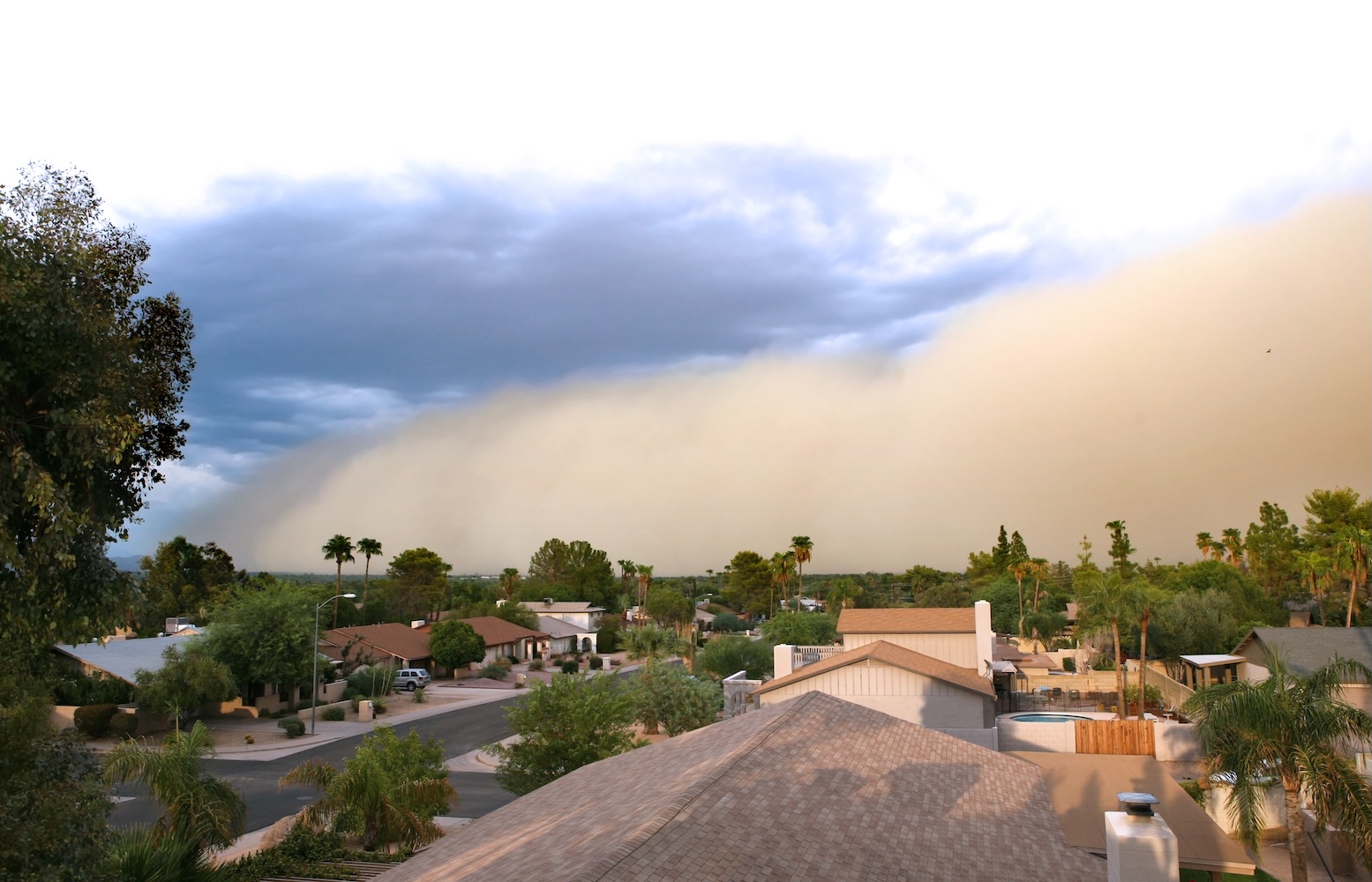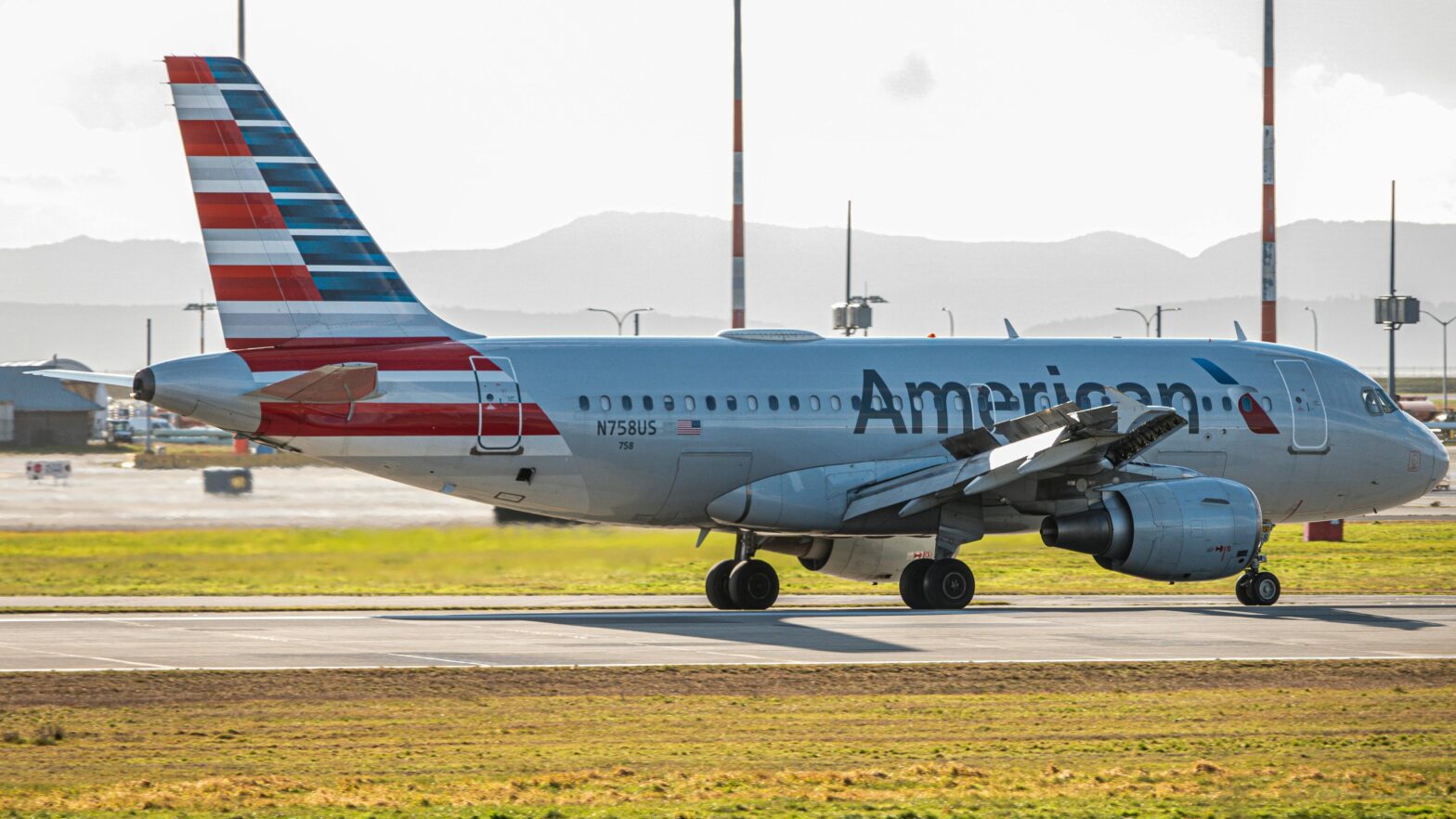One of the most well-known musicals of all time, “The Sound of Music” won hearts all over the world with its timeless tale, mesmerizing music and breathtaking cinematography. The story of Maria, a passionate novice nun who ends up serving as the seven von Trapp children’s governess, is told in this film, which is set in Austria just before the start of World War II.
Although the filming was initially supposed to last six weeks, due to severe rain, it ended up taking eleven. The filming started in the spring of 1964. For movie lovers and tourists, going to these popular film locations offers a special chance to fully immerse oneself in the von Trapp family’s world. This guide will list the locations in Salzburg, Austria used for filming, highlighting the attractions for fans to see and do, and provide helpful advice for organizing a trip.
Mirabell Palace And Garden
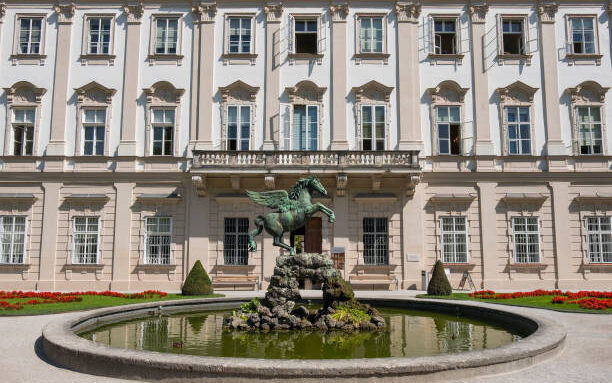
Key Scenes: Maria and the children singing “Do-Re-Mi.”
Best Time to Visit: May to September (late spring to early autumn).
Transportation Options: Walk from Salzburg city center; buses; taxis.
Things to Do: Visit Mirabell Palace and Gardens, explore the Salzburg Old Town and tour the Mozart Residence
This garden is a wonderful example of a classic Baroque park because of its big, symmetrical flowerbeds.
The 18th century saw the construction of Mirabell Garden, which was designed by renowned architect Fischer von Erlach. Greek mythology serves as the inspiration for countless statues that dot the park, which is centered around a large fountain. Maria and the kids sing “Do-Re-Mi” as they dance around the fountain in the movie.
In the film, the Pegasus fountain adjacent to the 17th-century palace is also shown. The choreography included the stairs that led to the rose hill.
Where to Eat: St. Peter Stiftskeller or Triangel
Where to Stay: Hotel Bristol Salzburg or Hotel Sacher Salzburg
Nonnberg Abbey
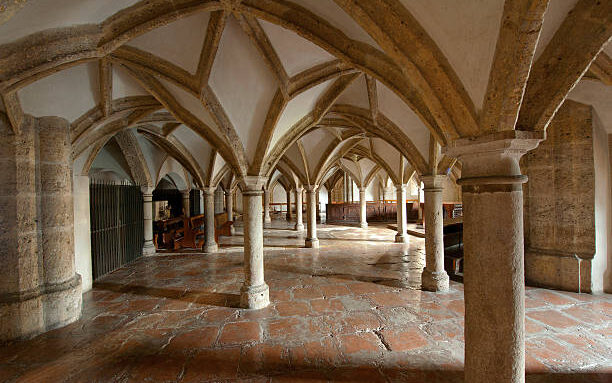
Key Scenes: Maria’s convent and her departure to the von Trapp family.
Best Time to Visit: April to October (spring to autumn).
Transportation Options: Walking from city center; local buses; taxis.
The oldest women’s convent north of the Alps is Nonnberg Abbey. The Abbey holds significance for both the film and the true Trapp narrative. Maria Augusta von Kutschera traveled by train to Salzburg following her graduation from college in order to submit her application for the Benedictine Sisterhood’s novitiate. She married Baron von Trapp at the convent Church in 1927 after working as a governess outside the convent.
The first scene from Sound of Music, in which Maria returns too late and the nuns proceed to mass, is one of the scenes that was filmed here. The Abbey’s courtyard served as the venue for the song “Maria” performance. The kids approached the entrance of the Abbey to beg Maria to go back to their house. The cars outside the Abbey gate during the escape sequence were also filmed in the real location.
Things to Do: Visit Nonnberg Abbey, tour Salzburg Cathedral and explore Residenzplatz
Where to Eat: Augustiner Bräu or Gasthaus Zwettler’s
Where to Stay: Hotel Goldener Hirsch or Radisson Blu Hotel Altstadt
Summer Riding School
Key Scenes: The von Trapp family performs in the concert.
Best Time to Visit: May to October (late spring to autumn).
Transportation Options: Walking from city center; local buses; taxis
Boulders were removed from the Mönchsberg to be used in the construction of the Salzburg Cathedral. The Summer Riding School, where competitions were held, was constructed into the mountainside in 1693 by Archbishop Johann Ernst von Thun. Currently, this structure houses a theater and is one of the Festival District’s venues. Here at a choral competition, the “real” Trapp family performed. In the movie, “Edelweiss” was sung by Christopher Plummer as their getaway was planned behind the curtain.
Another location that many people connect with The Sound of Music is the Horse Pond, which is next to the Festival Building. Fischer von Erlach, an Austrian architect, constructed it in 1695.
Things to Do: Tour the Summer Riding School, visit Getreidegasse, explore the Salzburg Museum
Where to Eat: Die Weisse or Goldgasse
Where to Stay: Arthotel Blaue Gans or Hotel Elefant
Town And Lake Mondsee

Key Scenes: Wedding scene at Mondsee Cathedral.
Best Time to Visit: June to September (summer).
Transportation Options: Buses from Salzburg; driving is also recommended.
Mondsee is a small town dominated by a huge cathedral. It used to be the center of a significant monastery. Established in 748 atop the remains of a Roman colony, it shaped the local way of life for over a millennium until its dissolution in 1792. This location was used to film the wedding scene in which Maria, escorted by Liesl, approached the baron in front of the main altar.
Things to Do: Visit Mondsee Cathedral, boat rides on Lake Mondsee, walk around the town center
Where to Eat: Gasthof Drachenwand
Where to Stay: Iris Porsche Hotel & Restaurant or Schloss Mondsee
Salzburg Residence
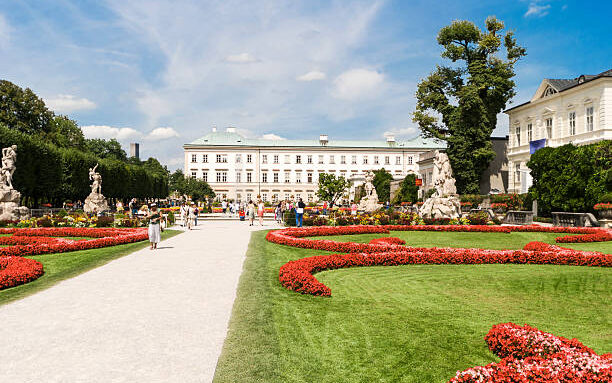
Key Scenes: Scenes involving Austrian aristocracy and grandeur.
Best Time to Visit: May to September (late spring to early autumn).
Transportation Options: Walking from city center; local buses; taxis.
The ancient city core is centered around Residence Square. When Maria traveled to the Trapp family house for the first time in the movie, she sang “I have confidence” as she crossed this square.
The Residence Fountain is the biggest baroque fountain outside of Italy, at fifteen meters tall. Built in 1658–1661, it is thought to have been created by the Italian artist Tommaso di Garona and is composed of marble from the Untersberg, a mountain close to Salzburg. Its water-spouting horses became internationally famous as a result of their film appearance. Maria paused her singing of “I have confidence” at the fountain to squirt the horses with water.
Things to Do: Visit the Salzburg Residence, explore the Residence Gallery, and tour the DomQuartier
Where to Eat: Carpe Diem or Blaue Gans
Where to Stay: Hotel Stein or NH Collection Salzburg City
St. Peter’s District, Salburg
Key Scenes: Scenes featuring the historic abbey and cemetery.
Best Time to Visit: April to October (spring to autumn).
Transportation Options: Walking from city center; local buses; taxis.
Salzburg’s oldest district is actually St. Peter’s District. Here were the first monks to settle, led by Saint Rupert. Gradually, the remainder of the city began to disperse around the monastery. The oldest cemetery still in operation in Austria is St. Peter’s Cemetery. Up until 1454, the only people interred here were priests and monks. Family vaults from the 17th century with a variety of wrought iron details surround the cemetery in arcades.
St. Peter’s Cemetery was obviously a great source of inspiration for the filmmakers, since it was recreated in the Hollywood studios for the scene in which the von Trapp family was hiding beneath the tombstones while the Nazis were hunting them down. The opening scene also features St. Peter’s Church.
Things to Do: Tour St. Peter’s Abbey, visit St. Peter’s Cemetery or explore St. Peter’s Catacombs
Where to Eat: St. Peter Stiftskeller or Bärenwirt
Where to Stay: Hotel Wolf-Dietrich or Hotel am Mirabellplatz
Frohnburg Palace

Key Scenes: Exterior shots of the von Trapp villa.
Best Time to Visit: May to September (late spring to early autumn).
Transportation Options: Buses; taxis; walking from Salzburg city center.
The Prince Archbishops used the baroque Frohnburg Palace as a country retreat when it was constructed in the seventeenth century. Its front entrance, courtyard, and facade served as the set for the fictional Trapp Villa.
After dancing in the Hellbrunn Alley, Maria traveled here to have her first encounter with the von Trapp family. When they returned from their honeymoon and learned that the Germans had taken over Austria, the baron tore down the flag that was hanging above the castle’s doorway. When they attempted to flee, they quietly pushed their automobile through the castle’s gate. The Mozarteum Music Academy’s music students now reside in the castle.
Things to Do: Visit Frohnburg Palace and explore the surrounding parks
Where to Eat: Gwandhaus or Schloss Aigen
Where to Stay: Hotel Rosenvilla or Schloss Leopoldskron
Hellbrunn Palace
Key Scenes: “Sixteen Going on Seventeen” song.
Best Time to Visit: April to October (spring to autumn).
Transportation Options: Buses from city center; taxis; cycling.
Situated a short distance south of the city, Markus Sittikus von Hohenems ordered the construction of Hellbrunn Palace between 1613 and 1619. The Archbishop attempted to create an Italian ambiance in the castle and its grounds because he had lived a portion of his life in Italy.
The glass gazebo, which served as the backdrop for several romantic moments in the movie, including “Sixteen Going on Seventeen” and “Something Good,” is one of the key locations. Following a thorough restoration, it was rebuilt at Hellbrunn Palace’s park. This is a more visitor-friendly location rather than the original one, which was the garden of Leopoldskron Palace. Since Hellbrunn has not had any stylistic modifications—unlike many other palaces—visitors can still take in the breathtaking southern scenery of this Renaissance park.
Things to Do: Tour Hellbrunn Palace and Gardens, visit the Trick Fountains, explore the Salzburg Zoo, Untersberg Mountain or Leopoldskron Palace
Where to Eat: Gasthof Schloss Hellbrunn or Villa Flora
Where to Stay: Hotel Schloss Leopoldskron or Arcotel Castellani
Schloss Leopoldskron
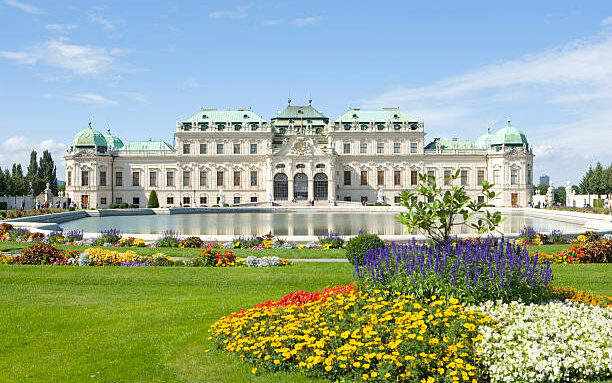
Key Scenes: The back of the von Trapp family home.
Best Time to Visit: May to September (late spring to early autumn).
Transportation Options: Buses; taxis; walking or cycling from city center.
One of the most significant sites for the movie was Schloss Leopoldskron, where the Trapp Family residence was depicted from the back. On the terrace, the baroness and the family drank lemonade. During the ball scene, Maria and the Baron danced on the balcony while the kids tumbled into the nearby lake. For the interior studio shoots, a duplicate of the Venetian chamber from the castle served as the ballroom.
Archbishop Leopold Count Firmian had it constructed in 1736 as a home for his family. The building had numerous owners after the Firmian family sold the estate in 1837. Originally a gallery, Leopoldskron later belonged to a landlord; among the owners is even the King of Bavaria.
It was in poor shape when renowned author and Salzburg Festival founder Max Reinhardt purchased it in 1918. Reinhardt restored it to its former splendor and staged theatrical productions in the park. The “Salzburg Seminar in American Studies,” an organization dedicated to the study of economics, has owned the building since 1959. Today, in addition to the Salzburg Global Seminar, there is a hotel now located at Schloss Leopoldskron, and the hotel’s earnings go directly toward advancing the purpose of challenging current and future leaders to shape a better world.
Things to Do: Tour Schloss Leopoldskron, walk around the lake, visit the Max Reinhardt Library, Hellbrunn Palace or Festung Hohensalzburg
Where to Eat: WeiherWirt or Gasthof Schloss Aigen
Where to Stay: Hotel Schloss Leopoldskron or Hotel Villa Auersperg
Hohenwerfen Fortress
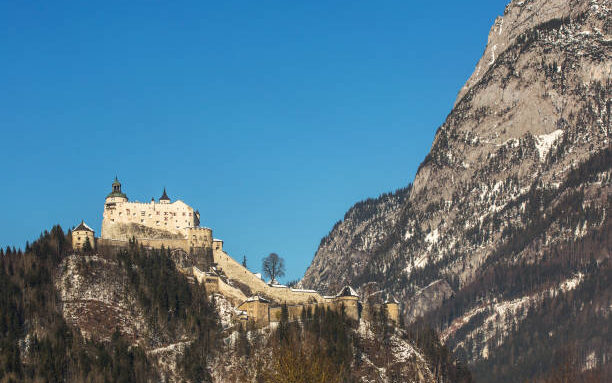
Key Scenes: Background fortress in mountain scenes.
Best Time to Visit: May to September (late spring to early autumn).
Transportation Options: Trains to Werfen followed by a short walk or shuttle; driving is also an option.
The small community of Werfen is located about 40 kilometers south of Salzburg’s city center and is accessible via a freeway. During the reign of Archbishop Gebhardt von Helffenstein, the stronghold was constructed in 1077 with the purpose of safeguarding and fortifying the pass that led into the Salzburg basin. Werfen serves as the starting point for visits to the well-known Giant Ice Caves. You enter the breathtaking cave system—rumored to be the largest in the world—escorted by a guide.The setting for Julie Andrews and the kids’ “Do-Re-Mi” is ideal thanks to the Hohenwerfen Fortress.
Things to Do: Tour Hohenwerfen Fortres and explore Eisriesenwelt Ice Cave or Golling Waterfall
Where to Eat: Obauer or Restaurant Auszeit
Where to Stay: Hotel Werfenerhof or Gasthof Pötschner
